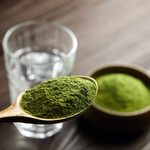Are You Sushi Savvy?
Discover the benefits of this beautifully crafted food. Sushi is both delicious, rich in omega-3 and nutritious, so learn to enjoy it, but be aware of the potential risks of eating raw fish.
How Sushi Started
Sushi had its beginnings in the 7th century when Southeast Asians introduced the technique of pickling. The Japanese adapted this method when packing rice and fish. As the fish fermented, the rice produced lactic acid, which in turn caused the fish to be pickled. After many improvements throughout the centuries, sushi has developed into a unique, healthful food, and its popularity continues to grow.
Once considered an esoteric dish, sushi has gone mainstream in North American restaurants and homes. And no wonder. This beautiful food is both delicious and nutritious.
Technically, the word sushi refers to vinegared rice, but the word is commonly used to describe a variety of finger-sized foods that include raw fish on a bed of rice (nigiri), or rice and seaweed rolls, both thin and larger sizes, with fish and/or vegetables (maki). These foods can be eaten as is, or dipped into shoyu (Japanese soy sauce) before eating. Much care and attention is put into the creation of these beautiful foods.
Health Benefits
Sushi uses simple, healthful ingredients-rice, seaweed, fish, and vegetables, and it is low in fat and calories, so it’s a great choice for those watching their weight or worried about their cholesterol. Those watching their salt intake should go easy on the seaweed (nori) wrapped varieties and the soy sauce.
The bite-sized pieces encourage the diner to eat slowly and savour the meal. A typical serving of sushi would consist of a variety of 10 pieces of nigiri and thin rolls, which would contain about 450 calories. As a general rule, nigiri ranges in calories from 40 to 100, with about 30 calories from the rice and the remaining from the various types of fish or topping. Two pieces of thin roll are about equal to one piece of nigiri, and thick rolls vary considerably depending on their ingredients. One of the most popular, California roll, which contains fish and avocado, has about 40 calories per piece.
Warning
Although chefs trained in the art of preparing sushi usually maintain rigorous standards of freshness and cleanliness, eating raw fish carries certain risks. Both freshwater and saltwater fish can be intermediate hosts for parasitic worms. Many of the fish used to make sushi are chilled to a temperature that kills parasites; nonetheless, sushi-eaters should be aware that there is a risk of infection.
Because the fish used in sushi is uncooked, it should not be eaten by pregnant women or those with immune disorders, because of the small risk of exposure to bacteria such as Listeria monocytogenes and parasites. For most diners, however, these risks are considered minimal, as long as they eat in reputable restaurants. For anyone who prefers not to eat raw fish, there are many other options, including cooked crab, shrimp, egg, tofu, or vegetables.
Get Sustainable
Irresponsible fishing practices has caused a dwindling supply of fish worldwide. The David Suzuki Foundation points out we’re fishing a lot, and in some cases using equipment that harms the ocean’s floor, damaging the environment in which fish live and reproduce.
The SeaChoice program has been developed to raise public awareness about the need to buy sustainable seafood and avoid those endangered species. The organization has just published a guide to sustainable sushi, so you can continue enjoying your favourite food guilt-free and help support our oceans.



